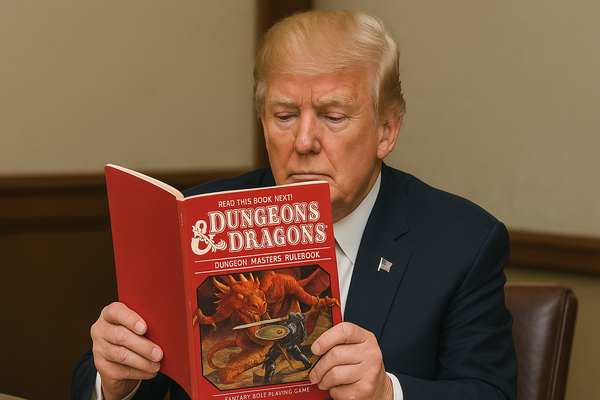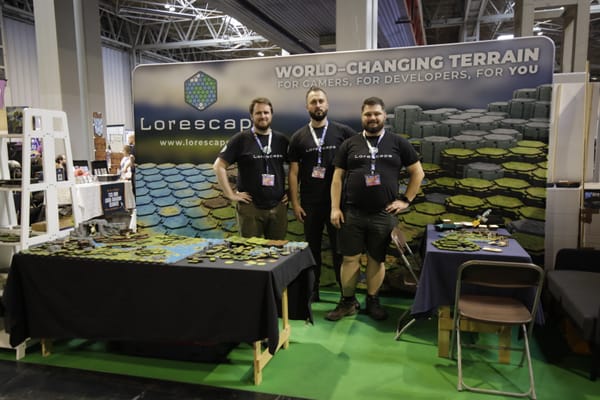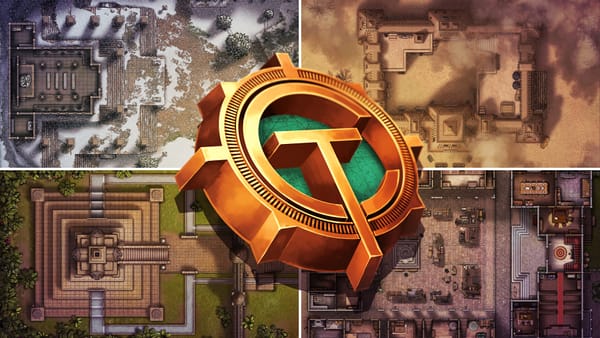MiniMaker’s Business Blueprint: 3D Printing, Digital Reach, and the Power of Community

In the ever-evolving world of tabletop gaming, few innovations have shaken up the miniature space quite like 3D printing. And few creators have embraced that disruption as boldly - and smartly - as the founder of MiniMaker.
What began as a passion project fueled by years of experience in wargaming and miniature painting quickly transformed into a scalable, customer-focused business. MiniMaker proves that you don’t need a warehouse full of stock to run a successful miniatures company - you just need the right blend of vision, technology, and community support.
In this interview, we sit down with MiniMaker’s founder to explore how he made the leap from software engineering to 3D printing entrepreneur. We dig into the tools powering his on-demand production model, the lessons learned from launching a digital storefront, and the grassroots marketing strategy that helped turn friends and hobbyists into loyal customers.
If you’re interested in building a brand, scaling a niche idea, or navigating the intersection of hobby and business, this conversation offers an insightful and honest look behind the curtain. From the challenges of resin printing safety to influencer partnerships and the rise of AI, this is not just a story about miniatures - it’s a blueprint for creative entrepreneurship in the TTRPG space.
Let’s dive in!
What inspired you to start MiniMaker? Was there a specific gap in the market that you noticed?
Przemek Barcikowski (MiniMaker) - I was looking for a solid business idea to justify leaving my previous career path (software engineering) and over time I noticed the potential that 3D printing has in tabletop miniature industry.
Wargaming and miniature painting have been my passion since an early age, I’ve been actively participating in this space for years so it was easy for me to notice that a change is coming.
With resin 3D printers being more accessible than ever, the time was right to try out an alternative approach to traditional miniature manufacturing, especially that digital modeling opened up access to a near-unlimited, worldwide pool of talent in sculpting.
Production methods like plastic mold injection make sense only if you produce big quantities of the same model, which puts a strong limitation on the offer variety. 3D printing allows to be profitable even when producing a single copy of a model, which opens up the possibility of having a very wide offer of models in different sculpting styles, matching many different games. These possibilities caught my attention, after some research and calculation I thought I can turn this idea into a profitable business.
Did you have prior experience with 3D printing or was it something you learned along the way?
I didn’t have any professional background in resin 3D printing when I started the business, but I have been 3D printing resin miniatures for my own hobby projects. So in my case, the skills in the technology came first, the idea for the business resulted from that.
What were the biggest challenges in turning the idea into a functioning business?
The first big challenge was the preparation stage. My education and previous experience had nothing to do with e-commerce or many mundane areas of a retail business like logistics, customs regulations etc.
Another big problem with resin 3D printing is safety. This technology is not plug&play, the printer doesn’t just go ‘brrrr’ as the internet says. There are a lot of difficulties related to the toxicity of the resin and its fumes, and safe postprocessing of a print which requires other chemicals like IPA. Printing for oneself in a garage is one thing, you are free to treat your own safety however you will, but it’s a completely different story when you want to create a safe working environment for others as well.
A lot more consideration needs to go into proper PPE (respirators, protective gear etc.), room ventilation and organization of the entire workplace.
And safety aside, by far the biggest challenge in this business so far was getting recognition for a completely new brand and gaining new customers. I guess this is universal for many industries, but I’ve found it very difficult and frustrating at times.
How did you go about setting up your online store? Did you build it from scratch or use an existing e-commerce platform?
Our online store minimaker.com is built using IdoSell platform. At the very beginning I’ve reached out to an e-commerce expert who helped me choose the best platform for my business idea and took the lead on the initial stages of the store implementation. IdoSell seemed like a great choice, I needed several custom tailored pieces of the store and this platform is very open to changes like that.
What technologies and tools power MiniMaker’s online store and order fulfillment system?
Most of the technology is incorporated in the IdoSell platform. MiniMaker produces miniatures on demand, which basically means no need for a warehouse or complex logistics. Every order is handled by us, from production all the way to shipping.
We use of course various payment gateways and shipping methods, but integration with all of them as well as tools for financial reports are provided by the webstore platform.
What lessons did you learn from launching and optimizing the store?
The most important lesson for me was that it’s way more valuable to have something working, than to have it perfect and optimized. I’ve spent way too much time trying to make everything perfect from the start and ended up launching the store later than I could have.
How did you attract your first customers? Was it through organic reach, word of mouth, or paid advertising?
All at once in fact. The first prints were made for friends from my hobby group, but customers who didn’t know me personally came in through Youtubers I reached out to. Some of them are my friends, others are officially sponsored by MiniMaker.
One of the main pillars of the business I established at the beginning was exactly that – the backbone of customer acquisition was meant to be Youtube channels specialized in miniature hobby content. I wanted to benefit from the fact that a viewer of such channel is already a potential customer.
What marketing strategies have worked best for you? Do you rely more on social media, paid ads, or influencer partnerships?
Mostly influencer partnerships, social media right after that. Building your own social media reach from zero is a tough process, but were slowly getting there.
Which social media platforms do you find most effective for reaching RPG players?
For RPG specifically. so far Facebook has worked best for us, but that may not be a great indicator as we’re still in the early stages of building our social media reach. We’re also working currently on some new partnerships with Youtube channels.
Do you use targeted advertising (Google Ads, Facebook/Instagram ads, etc.)? If so, which have been most effective?
Not at the moment, the plan is to invest more in that in the coming months.
Have you collaborated with RPG creators, streamers, or influencers to promote your miniatures?
The influencers we’ve collaborated so far were predominantly focused on wargaming and miniature display painting, but recently we’ve started a new collaboration with a local RPG creator/influencer and we’re excited to see how it goes. This is definitely a space in which we still have a lot to do!
Who is your ideal customer? Are they mostly individual players, game masters, or even game publishers?
It’s everyone really, regardless of who they are in the hobby space. B2B sales have their obvious benefits due to the size of orders, but on the other hand it’s the game masters and players who can spread the word about us organically by using our models and telling their friends about us.
We’re still growing rapidly and every new customer makes our day. Recently we’ve had our first customer from Japan register in our webstore!
Do you see differences in demand between casual RPG players and more dedicated miniature collectors?
It’s difficult for me to tell at this point. We need a bit more data to start drawing conclusions like that.
Have you noticed any specific trends in the types of miniatures that are most popular?
There are different trends depending on the area of the miniature hobby. In wargaming it’s often related to releases of other companies, but in RPG it’s way more stable in time.
Unlike what I initially expected, the majority of customers buy more hero models than monsters or NPCs. I thought that in most campaigns there are more enemies than player characters. Or maybe most of our customers play really brutal RPG campaigns!
What’s the process of printing and shipping a miniature from start to finish?
First stage is the preparation of a print file. A single print can include several miniatures depending on their size, and every miniature has to have proper supports – a form of scaffolding required for a successful print. Luckily most miniatures on the market are released already pre-supported.
Once all miniatures are prepared, the print file has to be created in a program called slicer. It takes all the 3D models we want to print and cuts them into separate layers of the print. A single print layer can be as thin as 20 microns, which means that a human-sized model (in 32mm scale) can be divided into 2000 print layers.
With layers that thin there are thousands of reasons why a print can fail, so the settings of a slicer have to be tailored to the printer and resin which are used.
After the print is successfully finished, it has to be postprocessed in order to be usable. A model comes out of the printer covered in liquid resin which and need to be cleaned.
One way to do this is to wash it in IPA in an ultrasonic cleaner. Once that is done, we’re carefully taking it off the supports (the scaffolding) and checking for any less obvious quality issues.
The last stage is curing with UV light. Only after curing the model is ready to use and can be safely touched with a bare hand.
Do you handle everything in-house, or do you outsource any part of production or logistics?
We’re doing everything in-house.
Have you faced challenges in scaling production as demand grows?
Not many so far, as the production pipeline was designed from the start to be scalable – every element of the pipeline consists of identical blocks which can be multiplied.
We’ve had some teething problems as any growing business does, but luckily, we managed to avoid any major issues so far.
Where do you see MiniMaker in the next 3–5 years? Do you plan to expand the product range or enter new markets?
Oh yes, I have huge plans and many ideas for the future of MiniMaker. We’re expanding our model range all the time, almost every week something new is uploaded to the store.
A big new type of products we’re currently introducing is scenery and terrain for wargaming and RPG – FDM printed, which is a completely different printing technology from resin. Starting towards the end of 2025 I’d like to become more involved in the hobby scene by organizing and sponsoring events and travelling to hobby shows, trade fairs and other events.
From 2026 I’m planning on developing our own IP. Our own model lines for sure, maybe more on top of that.
Regarding new markets – from the very start we’re shipping worldwide, but there are still many areas of the world where we have no customers, I’d like to work on that too.
And where do I see MiniMaker in 3-5 years – I’d like it to be a well know brand in the miniature industry. I don’t have a fixed goal for this timescale, so far I’m very excited with the entire journey and can’t wait to see what’s around the corner!
What trends do you see shaping the future of 3D-printed miniatures for RPGs?
In my opinion 3D printing will be slowly taking over the miniature market for RPGs specifically. It will never take 100% of the market, but I can easily imagine it having the majority. In wargaming or the display painting parts of this hobby the market looks a bit different.
But in RPG specifically the wide variety of models is a plus as most players and gamemasters don’t need entire armies of models. Many customers want to get something fitting their exact needs and once they find it, they will often buy only a single miniature.
And this is where 3D printing shines - there are no stock limitations, no production forecasting. You can choose from an endless catalogue of digital models and print only one of them.
More and more people are also printing at homes, especially in FDM technology. All of this is transforming the hobby space and I don’t think that we’ll reach its new form anytime soon.
Do you think AI-generated models or procedural design tools will impact your business in the future?
I suppose it will happen at some point, to some extent. I don’t know how much will this impact me or the wider miniature industry. Many people value the artistry of the sculptor in their miniatures and even speak openly against any form of AI-generated models as having no value for them.
I think this strong market bias can minimize the impact of AI, but it will come at some point. In any case, if it occurs to be a huge wave when it comes, my aim is to ride it instead of standing firm and waiting to see if it crushes me.
Thanks Przemek!





